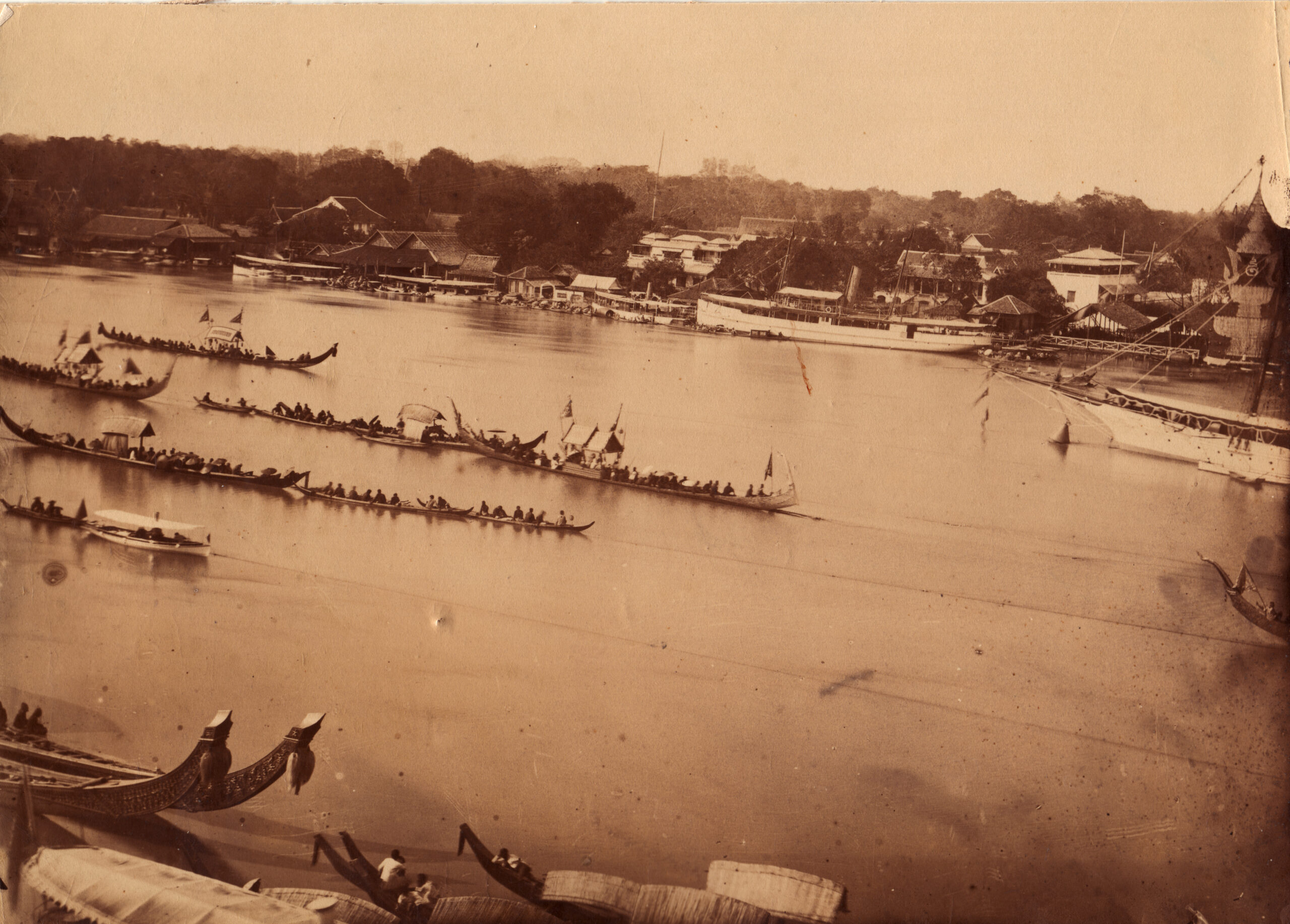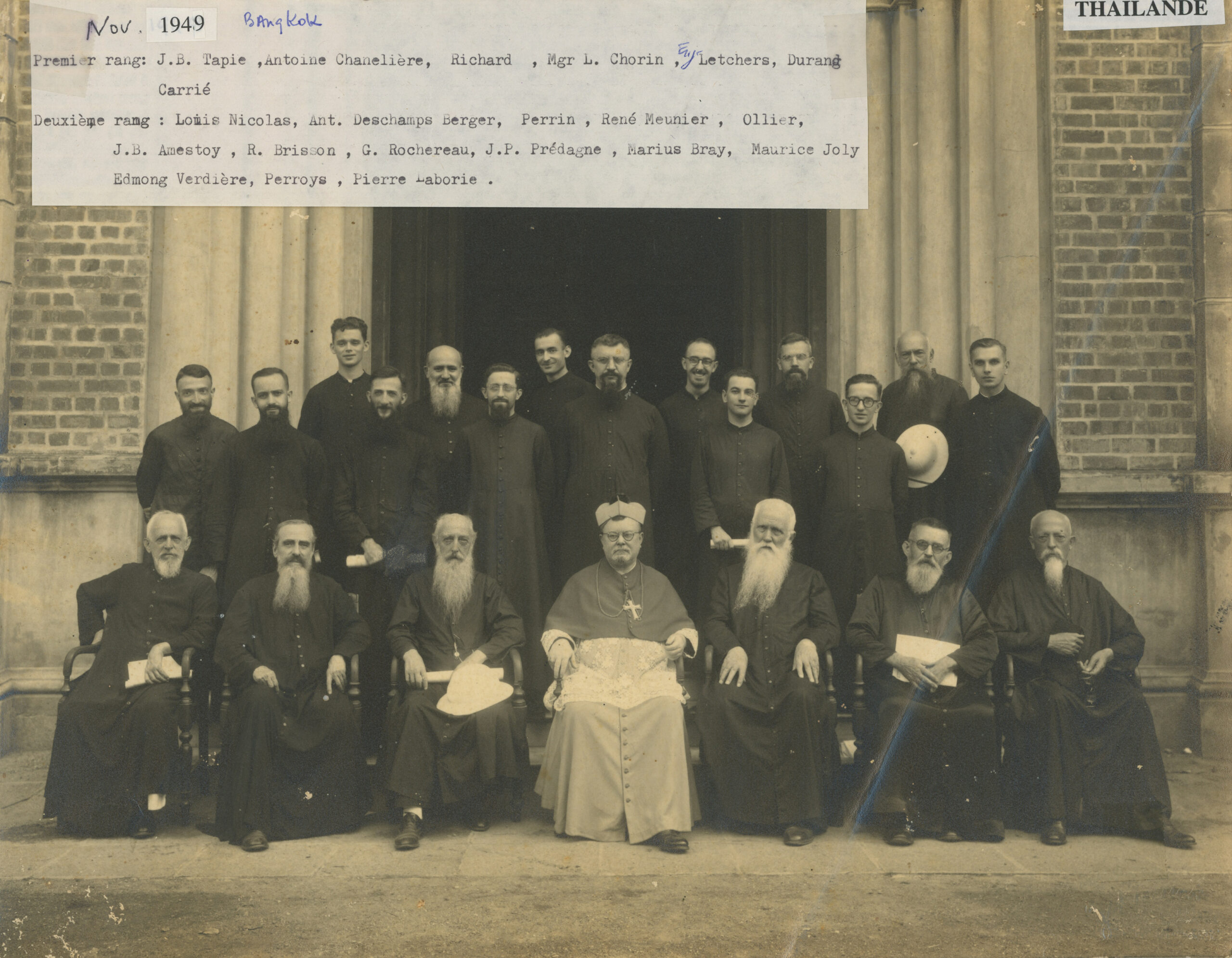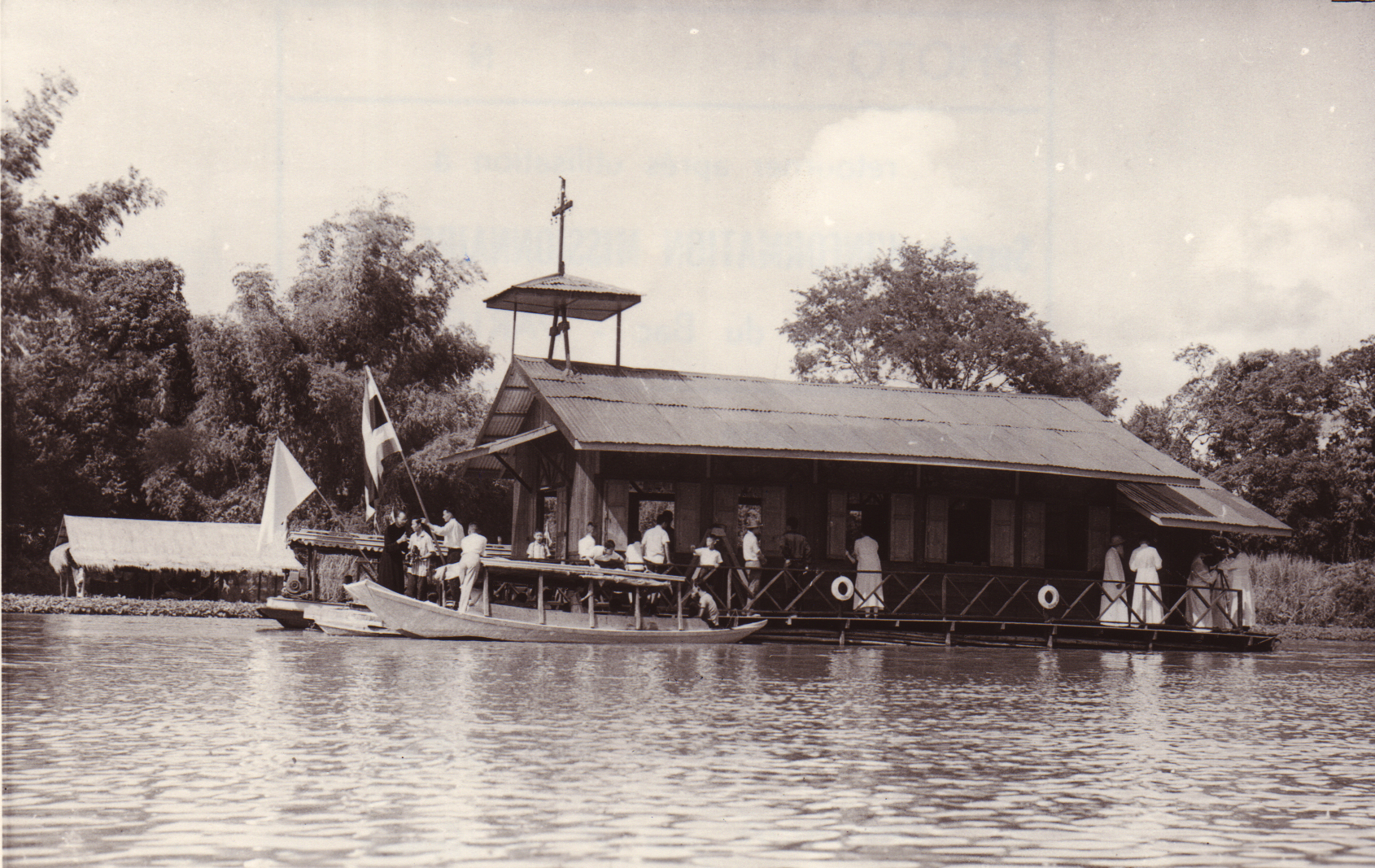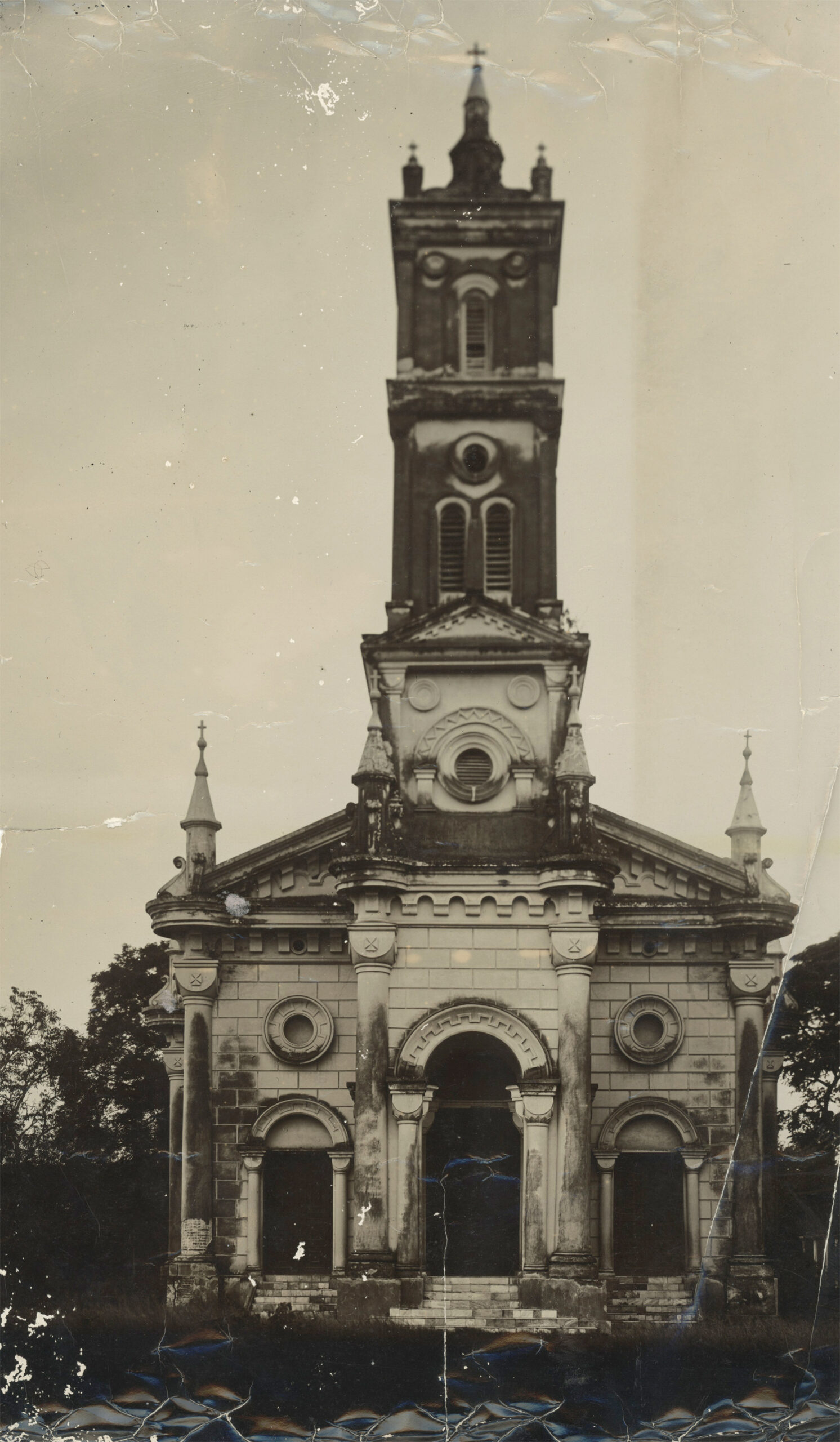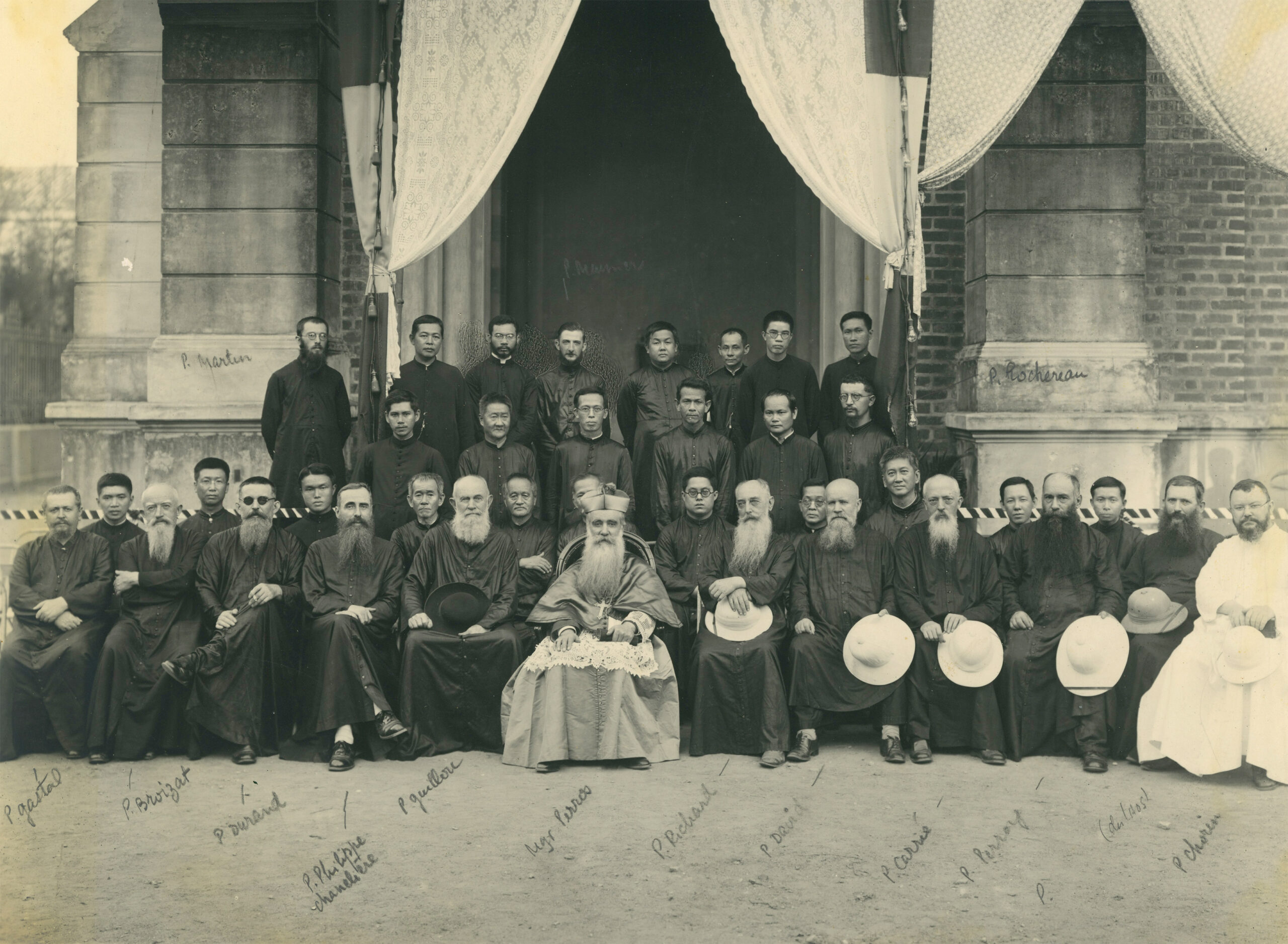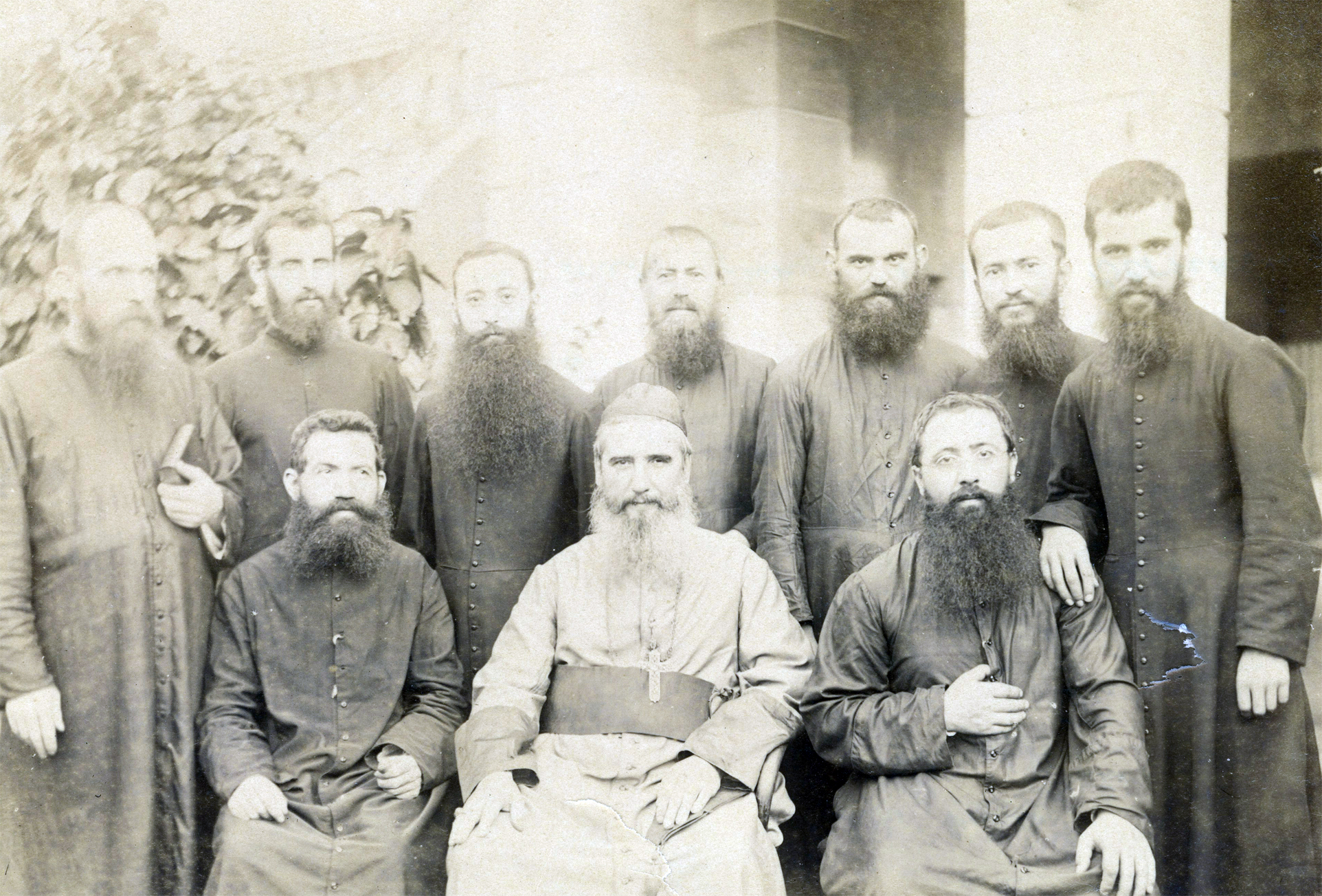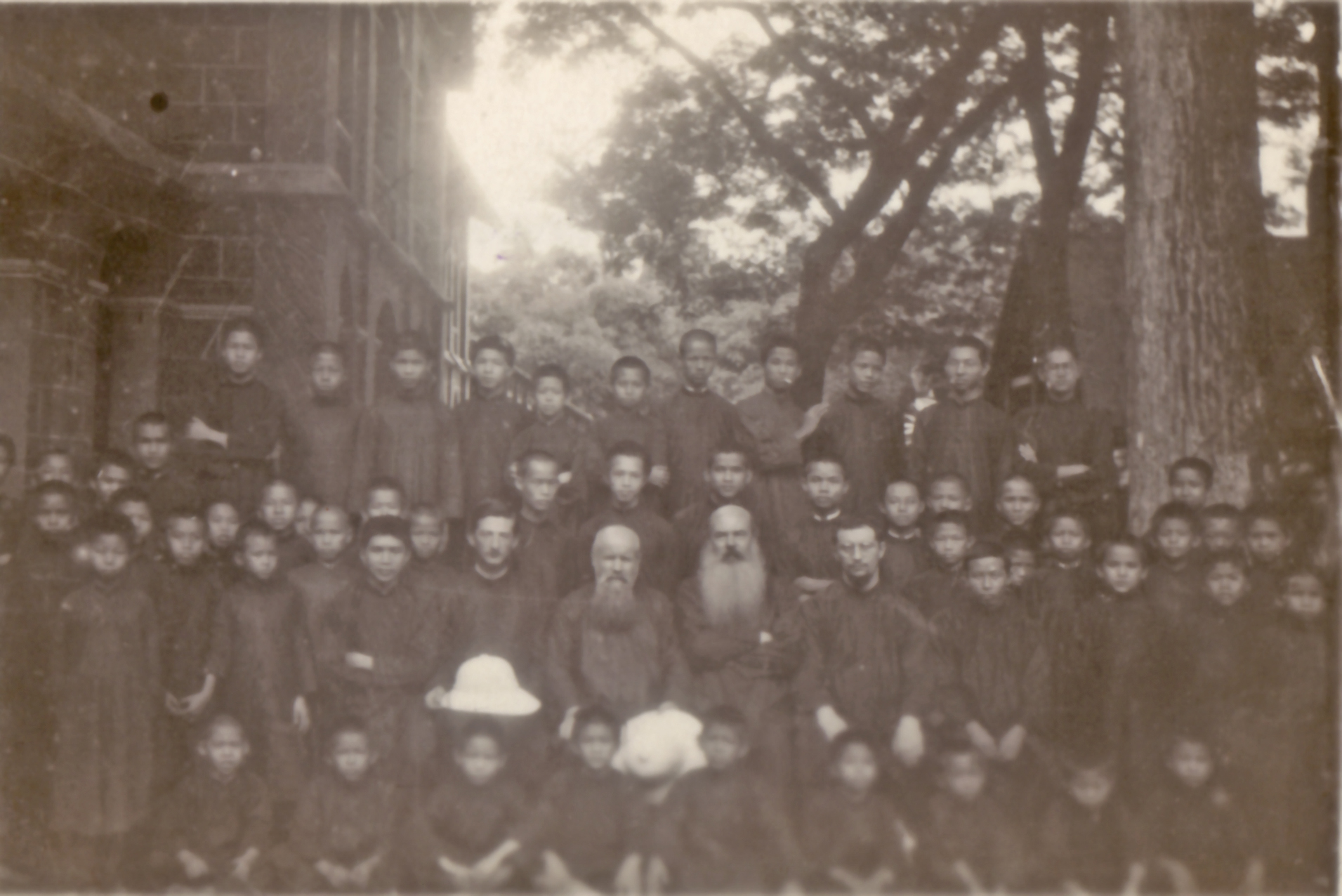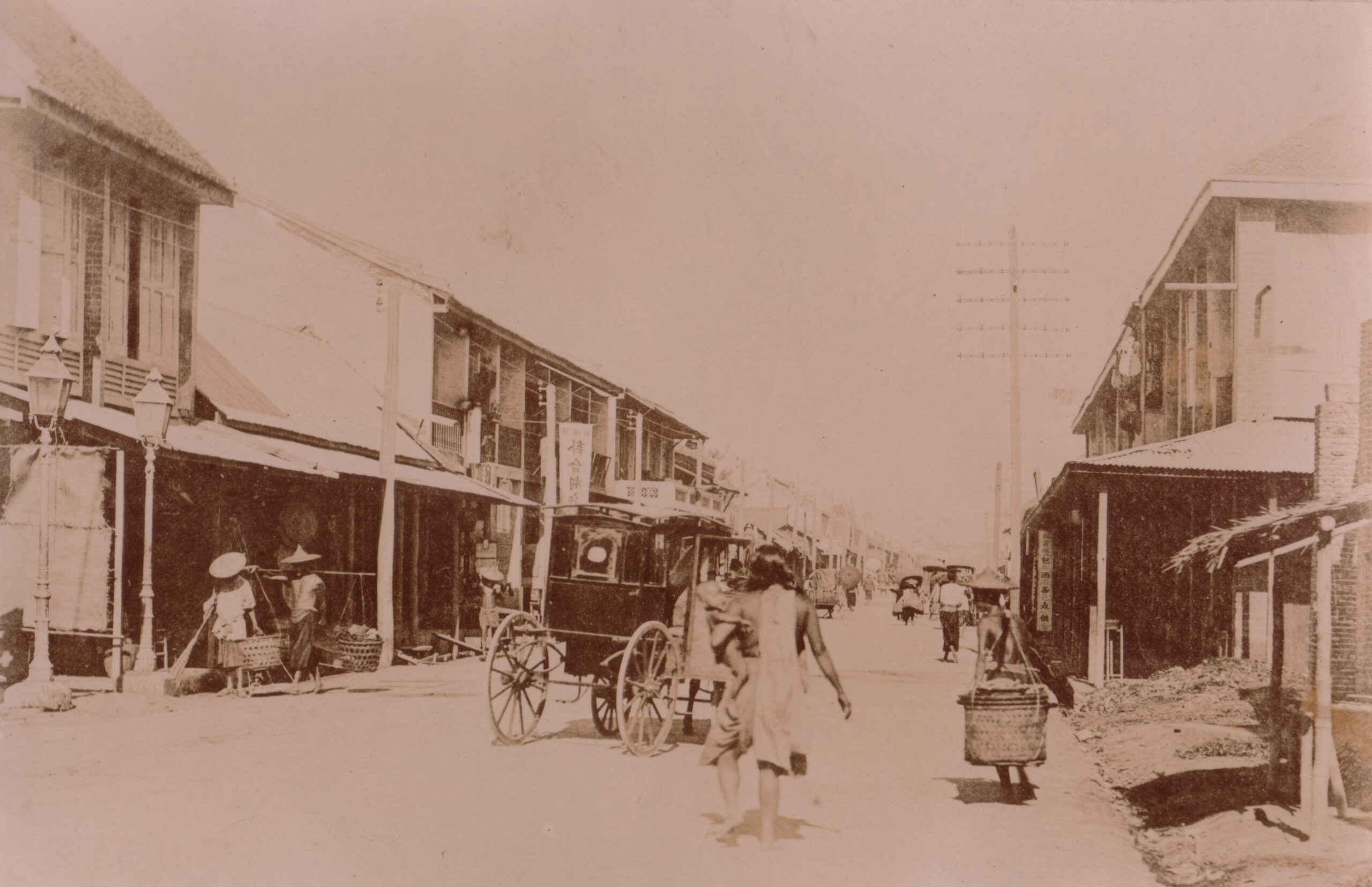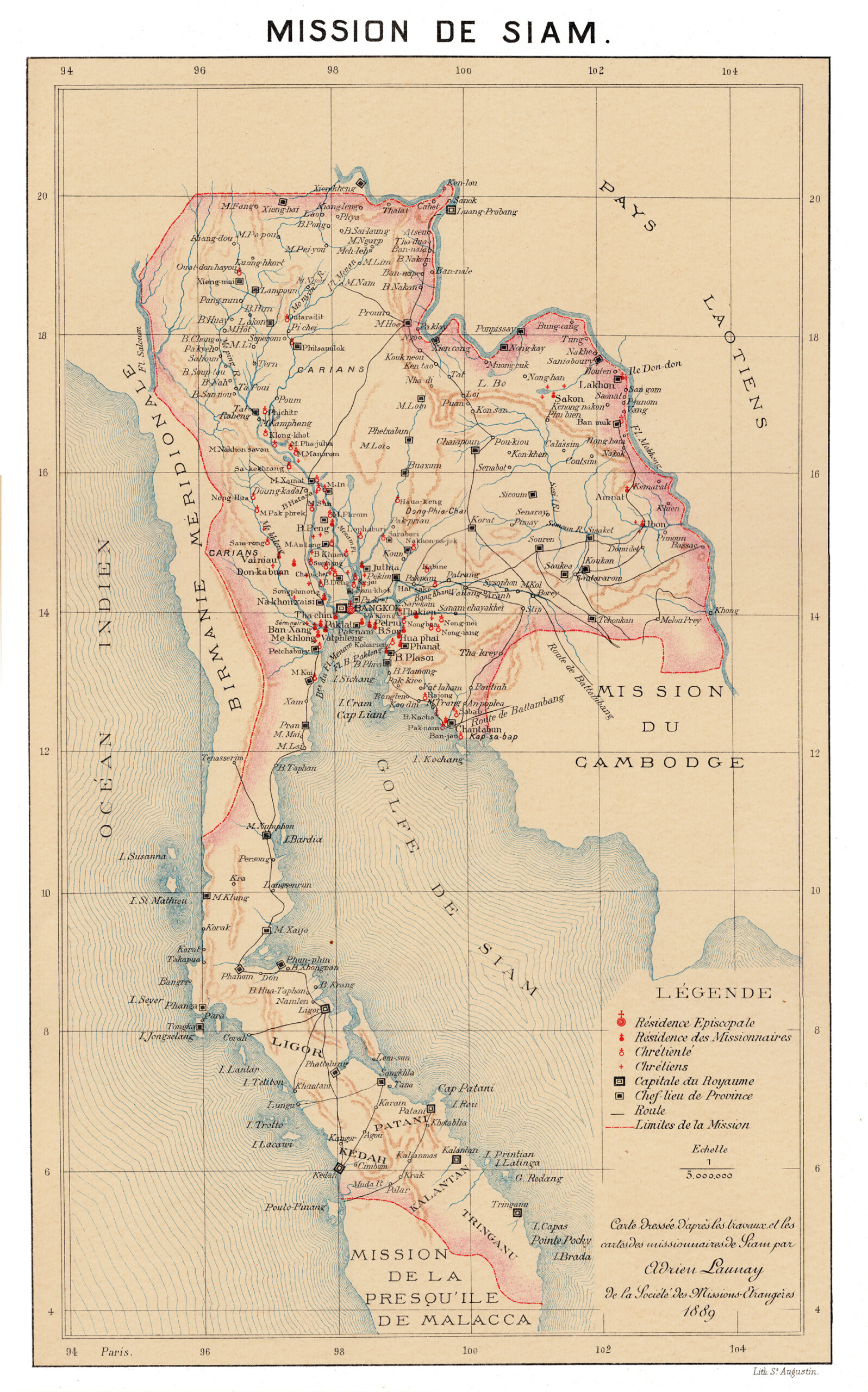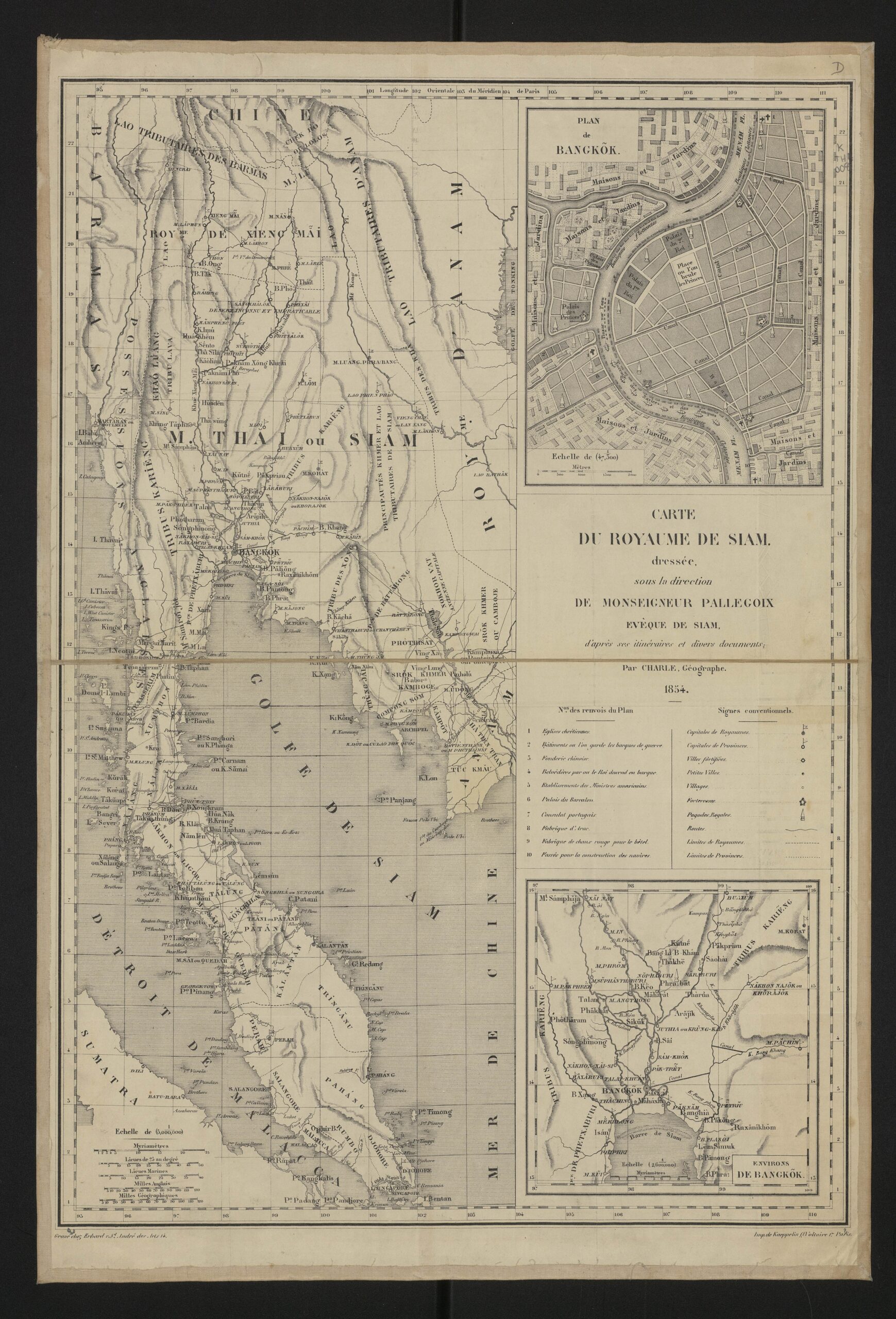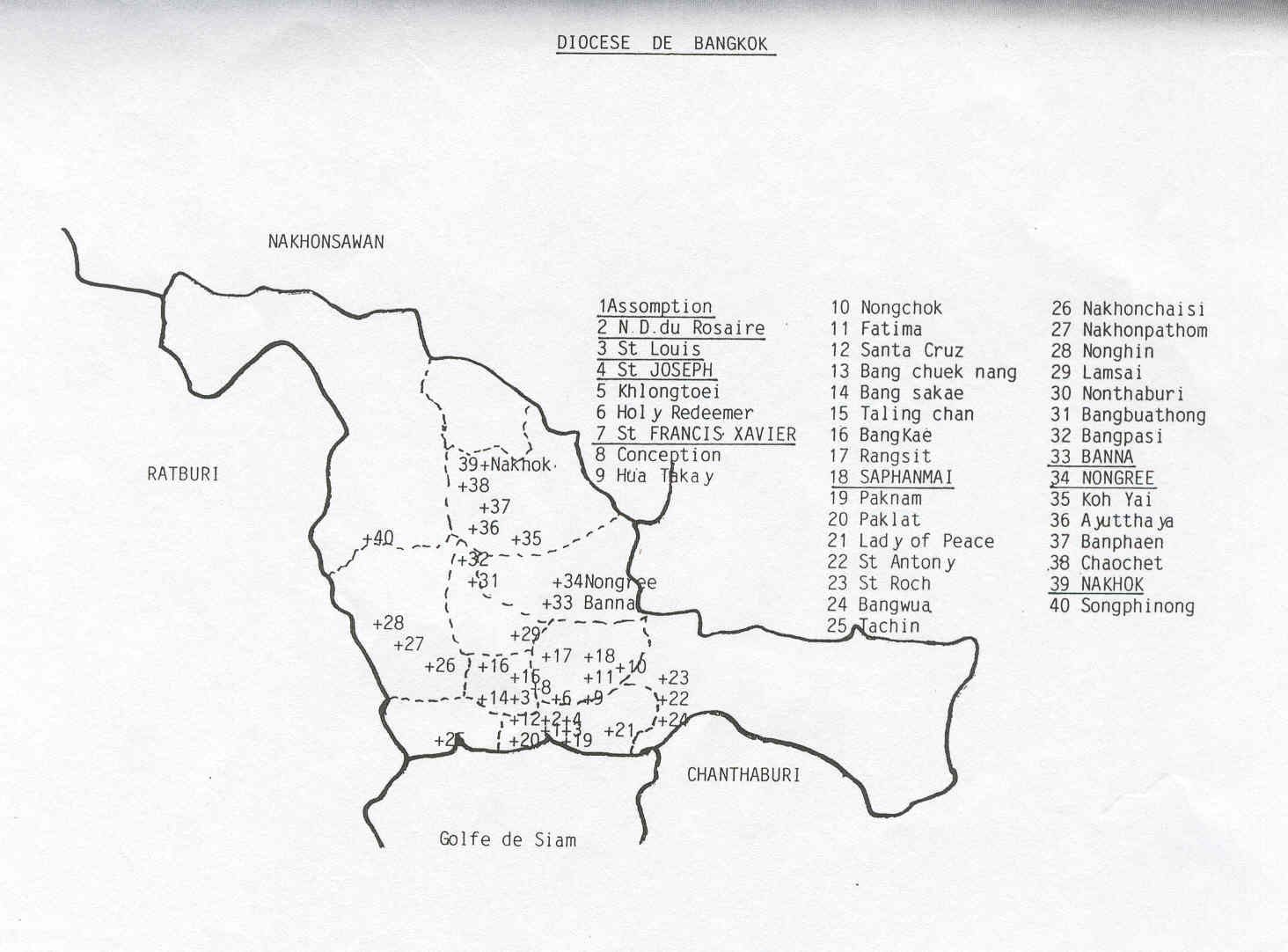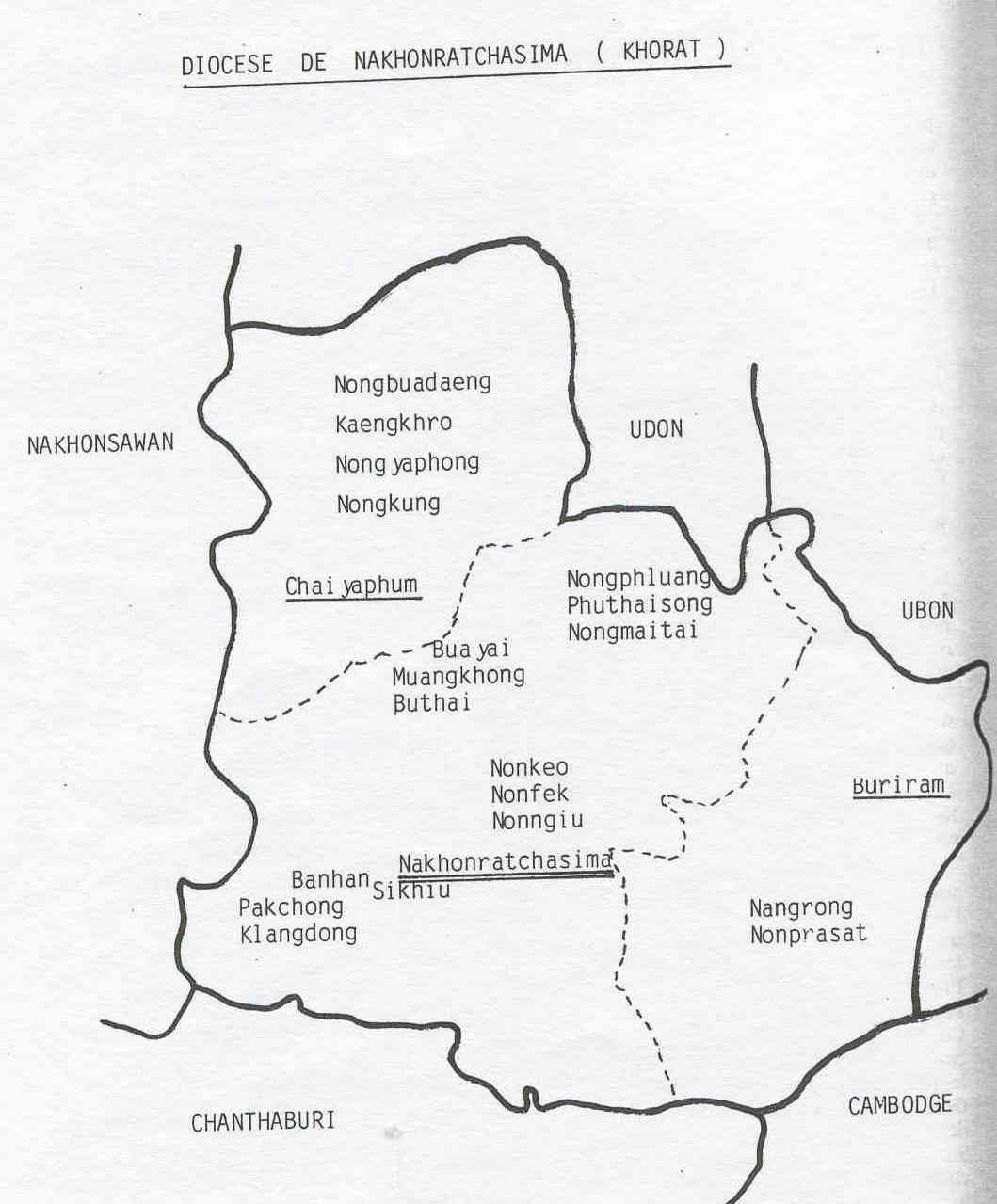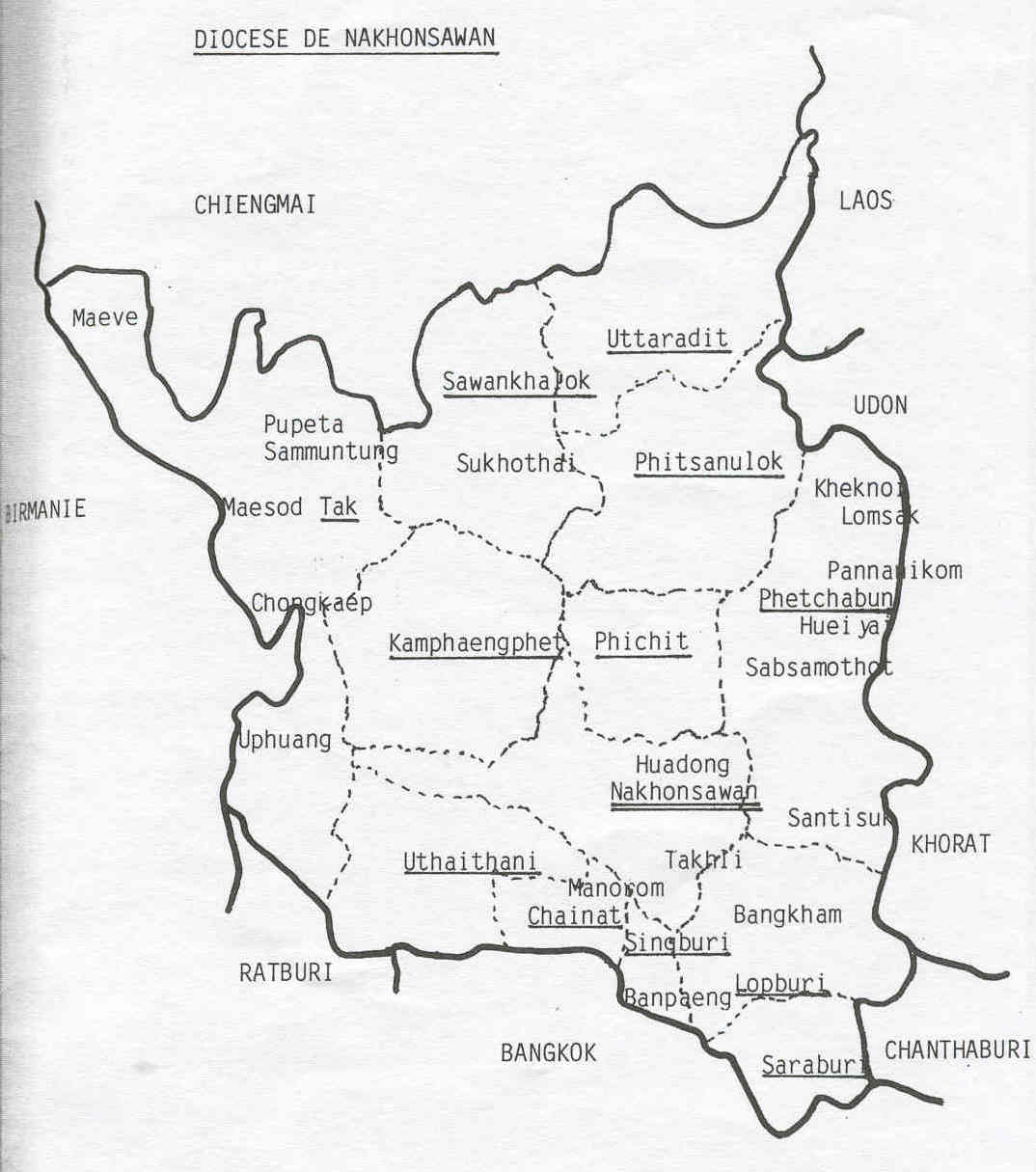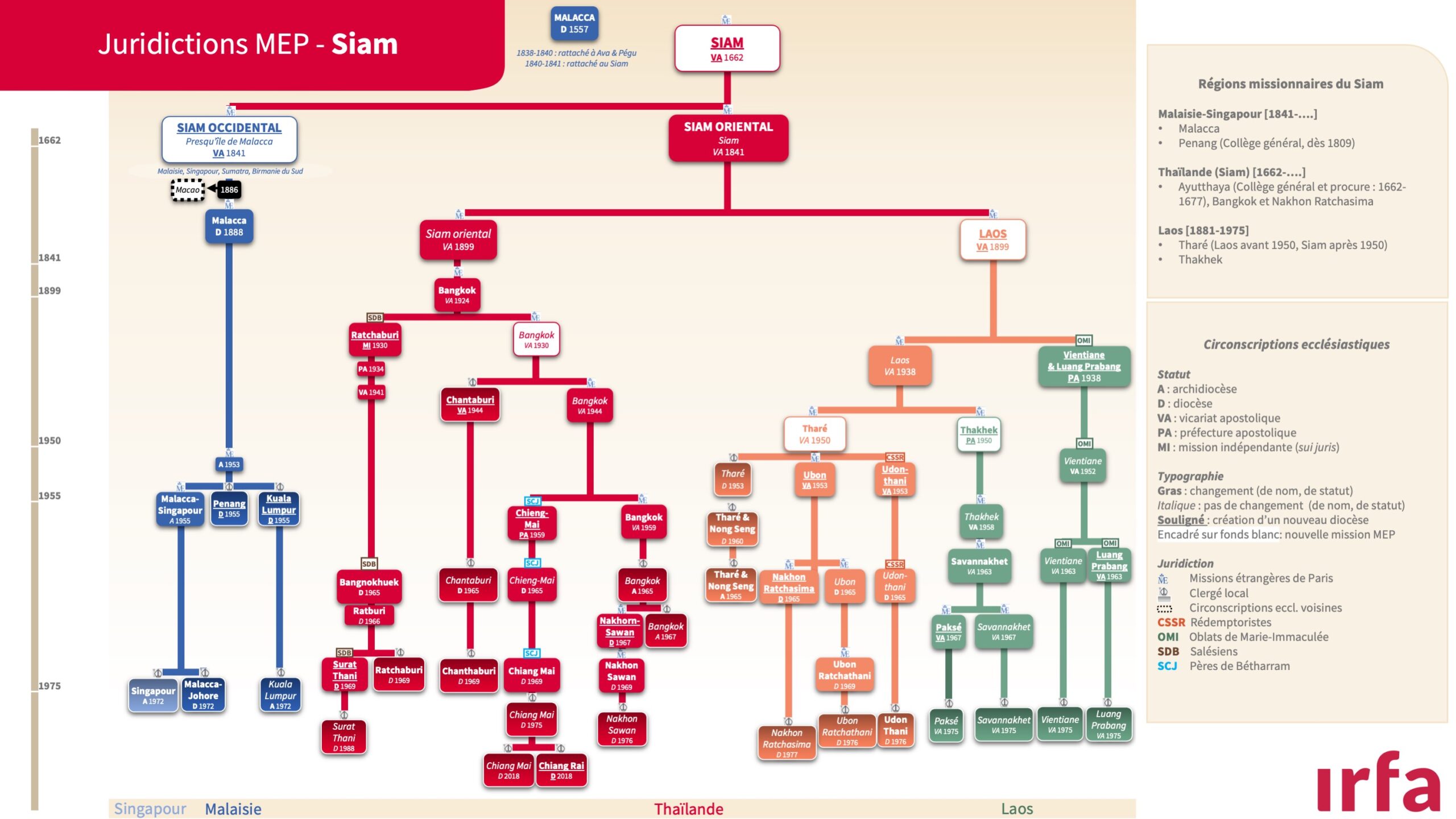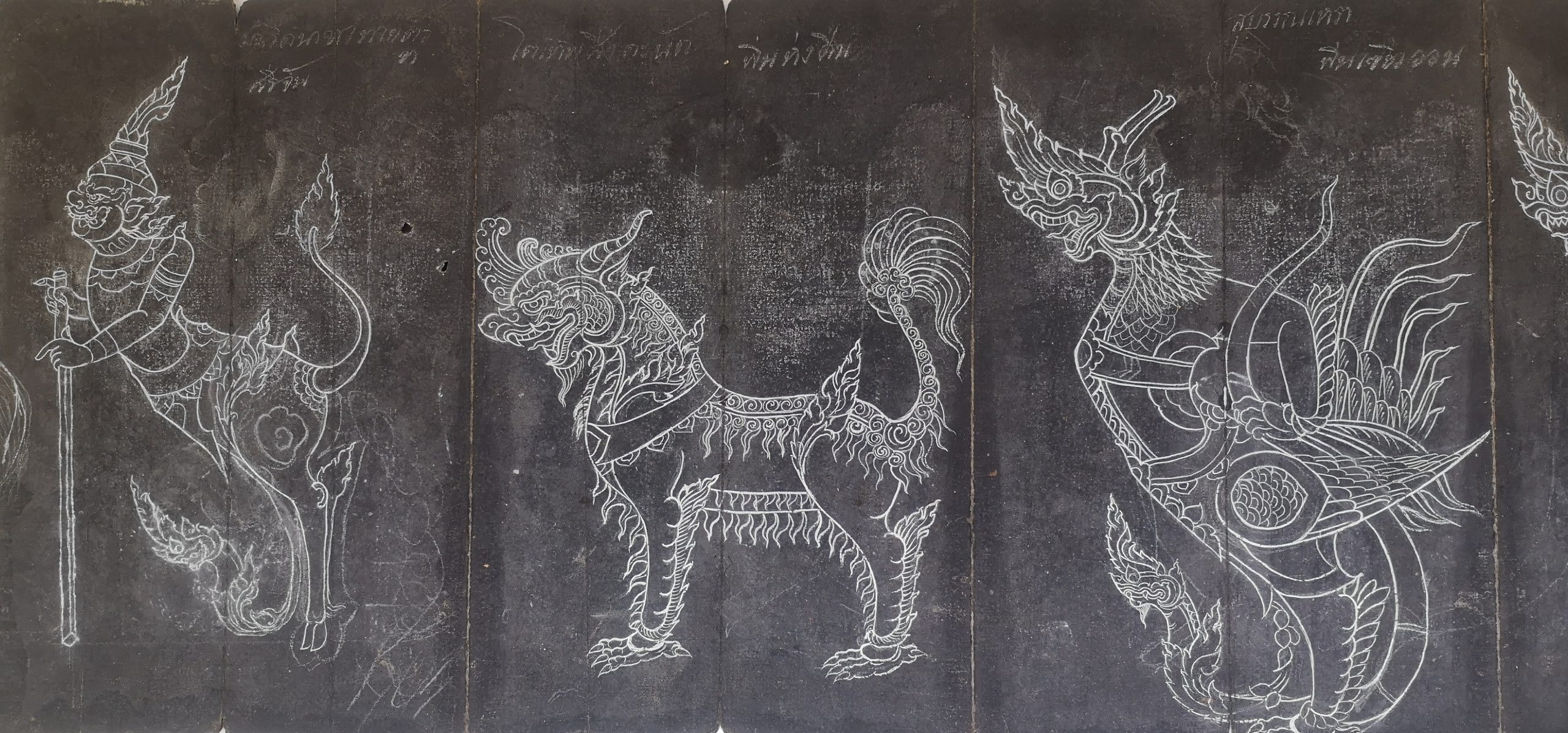
The MEP in Thailand (1662-1975): an overview
In 1662, Mgr Lambert de la Motte arrives in Ayutthaya (Siam), where he founds the first seminary. The Ayutthaya college is then created four years later and constitutes for almost three centuries the main training body of the local clergy. In 1669, the apostolic vicariate of Siam is instituted and Mgr Louis Laneau is nominated first vicar apostolic.
Despite these peaceful and promising beginnings, a harmful political chain of events follows, marking the start of the numerous failures that the mission will experience for about 150 years. Indeed, in 1688, French troops are expelled from the kingdom. A Siamese xenophobic reaction against the missionaries then takes place. The missionary numbers are thereby considerably reduced by 1690, when the MEP resume their activities.
The mission slowly manages to start over but, between 1731 and 1834, severe prohibitions proclaimed by the government seriously hinder its development. Moreover, there is a low turnover rate among the missionary ranks. Concurrently, very destructive Burman invasions lead to serious complications during Mgr Brigot’s episcopacy in the 1760s. Afterwards, the mission is able to lay solid foundations thanks to the land offered by king Thaskin. However, the king also forbids the Siamese convert to Christianity or Islam in 1774. The king’s death in 1782 brings about major changes: the missionaries, focused on Bangkok, can explore new provinces, and expand their scope of action from now on.
Over the course of Mgr Garnault’s episcopacy (1786-1811), the mission is reorganised around Penang. This represents an opportunity for the MEP to convert the Siamese living in provinces isolated from the capital and the central authority’s control. The missionary activity outside Bangkok continues during Mgr Florens’s episcopacy (1811-1834). However, this period is also marked by a real lack of missionaries in the ranks of the Siam MEP mission. The mission really develops from the episcopacy of Mgr Courvezy (1834-1844), who orders the building of numerous schools and churches, thereby renovating the vicariate. On the 10th of September 1841, a papal brief institute the first major division of the Siam mission into two apostolic vicariates: Western Siam and Eastern Siam.
During Mgr Pallegoix’s episcopacy (1841-1862), despite some complications, the apostolate of the MEP is facilitated by commercial treaties signed between foreign powers and Siam in the 1850s. But these treaties also entail certain excesses and therefore provoke a growing discontent among the Siamese population regarding the French presence. This change of attitude is confirmed in 1868 with the death of Rama IV and the arrival to power of a new regent, less tolerant with the missionaries.
Rama V’s reign (1868-1910) sees a rapid modernisation of Siam associated with greater religious liberty. The episcopacy of Mgr Vey is therefore marked by a growth in the number of vocations. In the early twentieth century, the vicariate also goes through numerous divisions, with the objective of expanding the borders of the mission and reaching new regions unknown to the MEP up to this point.
But if the missions are thriving during this period, the 24th of June 1932 coup d’état and the change of regime that follows put an end to the warm relations between the Church and the state, making the apostolate of Siam more difficult. In 1939, Siam becomes Thailand, and the new government demands that France gives back the territories it annexed since 1893. France refuses and the war is declared in 1940. Missionaries in Thailand are thereby forced to leave Bangkok. Many missionaries fearing for their lives will then flee Bangkok for Vietnam. In 1944, when the conflict is resolved, the missionaries that left Bangkok are asked to return. From 1947 onwards, the MEP start to transfer ecclesiastical offices to a local clergy.
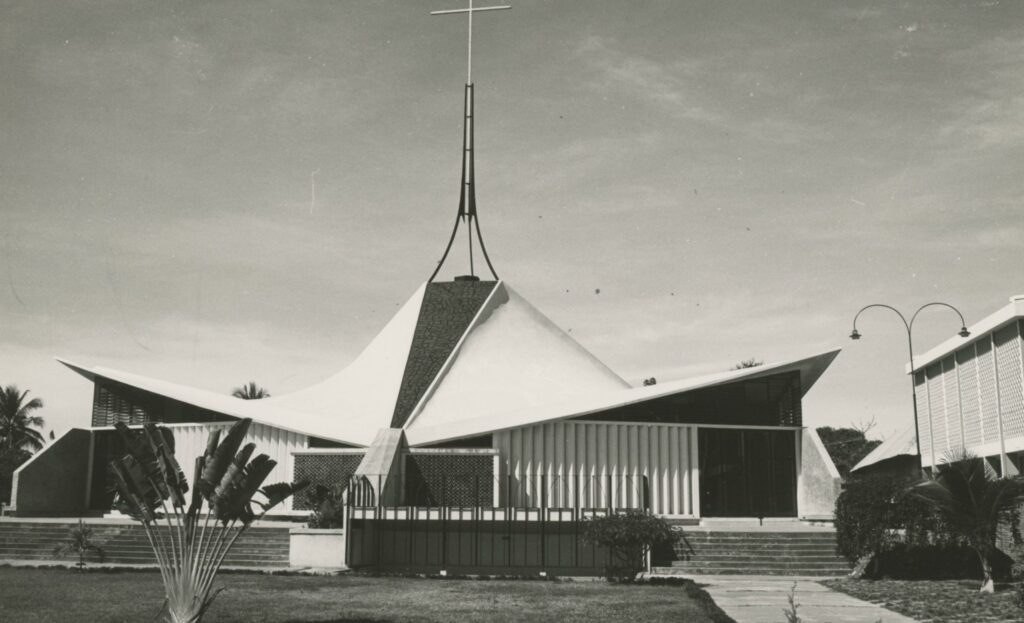
Chronology
1662: Mgr Lambert de la Motte arrives in Ayutthaya and creates the first seminary.
1666: foundation of the Ayutthaya college.
1669: creation of the apostolic vicariate of Siam. Mgr Louis Laneau is the first vicar apostolic nominated.
1688: deportation and imprisonment of the MEP missionaries because of the French intervention.
1690: resumption of the MEP activities.
The mission is greatly diminished: only 6 missionaries are left instead of 19, and 120 Christian Siamese remain out of the 500 to 600 before the persecutions.
1730: four major prohibitions are promulgated against the Christians.
1767: Ayutthaya is destroyed during the Burman invasion.
1774: a new edict forbids the Siamese to convert to Christianity or Islam.
1775: opening of the Bangkok seminary.
1786: there are 2,000 Christians in the Siam mission, including 988 only in Bangkok.
1792-1817: only 12 missionaries leave for Asia.
1834: there are 4,000 Christians in the Siam mission.
1841: the apostolic vicariate of Siam is divided into two vicariates: Eastern Siam (Thailand, Laos) and Western Siam (Singapour, Malacca, Penang, Mergui, and Tavay).
1856: Franco-Siamese treaty offering French nationals consular jurisdiction.
1868: Rama V succeeds to the Siamese throne. His reign favours the modernisation of the country and religious liberty.
1874: the Siam mission is made of 21 missionaries, assisted by 6 local priests, 32 catechists and 32 Lovers of the Holy Cross, for 10,364 Christians.
1875-1898: the number of foreign missionaries doubles from 26 to 53.
1927: the clergy is made of 35 Thai priests and 24 French missionaries, who are now in minority.
24th of June 1932: coup d’état and seizing of power by the military junta.
1939: Prime minister Phibun Songkhram seizes power and changes the name of the country. Siam becomes Thailand.
The new government demands that France gives back the territories it annexed since 1893. France refuses.
1940-1944: Franco-Thai conflict.
Many missionaries leave the country: 13 missionaries leave Thailand in 1941.
1965: Paul VI establishes 5 suffragan dioceses in Thailand. Thai bishops are nominated at the head of these dioceses.
BAYET Claudius (Mgr), Une lumière s’est levée : historique de l’évangélisation au nord-est de la Thaïlande et au Laos,Bangkok : Impr. Chamras Karnphim, 1985, 209 p.
BISSARA Laurent (P.), Louis Laneau, prisonnier et mystique : itinéraire spirituel à travers son traité sur la divinisation, Paris : Parole et silence, 2020, 252 p.
BUNARUNRAKSA Simona Somsri (Sr.), Monseigneur Jean-Baptiste Pallegoix : ami du roi de Siam, imprimeur et écrivain, 1805-1862, Paris : L’Harmattan, 2013, 316 p.
CHOVÉ Juliette, Jean-Baptiste Pallegoix, missionnaire catholique, et Mongkut, prince de Siam : genèse d’une rencontre et d’une amitié ou convergence de deux destins d’exception (1804-1835), mémoire sous la dir. de Gilles Delouche et de Jean-François Klein, 2006, 119 p.
COSTET Robert (P.), « Les Missions étrangères en Thaïlande et au Laos », in Les Missions étrangères en Asie et dans l’océan Indien, Paris : Les Indes savantes, 2007, p. 169-185.
COSTET Robert (P.), Les premiers missionnaires dans le Nord-Est 1881-1899, Bangkok, 1992, 40 p.
COSTET Robert (P.), Notes d’histoire chrétienne de la Thaïlande, Bangkok : Missions étrangères de Paris, 1983, 91 p.
COSTET Robert (P.), Siam, Laos. Histoire de la mission, Paris : Églises d’Asie, 2003, 445 p.
FABRE Jean-Luc, Le collège général du Siam, 1659-1691 : un projet, une réalisation, un exode ou une rencontre de l’autre ?, mémoire de maîtrise, Toulouse, 1992, 66 p.
FAUCONNET-BUZELIN Françoise, Aux sources des Missions étrangères : Pierre Lambert de La Motte, 1624-1679, Paris : Perrin, 2006, 358 p.
FAUCONNET-BUZELIN Françoise, Un évêque au pays des Talapoins : Louis Laneau, premier vicaire apostolique du Siam, 1637-1696, Paris : Cerf, 2021, 400 p.
FOREST Alain, Les missionnaires français au Tonkin et au Siam, XVIIe-XVIIIe siècles. Analyse comparée d’un relatif succès et d’un total échec, 3 vol., Paris : L’Harmattan, 1998.
JUMEAU Godefroy-Philippe, Le journal de voyage de Siam de l’abbé de Lionne, suivi de Mémoire sur l’affaire Artus de Lionne, Paris : Archives des Missions étrangères de Paris, 2001, 222 p.
PASQUALETTO Cécile, Inventaire descriptif des archives des Missions étrangères de Paris concernant le Siam (1691-1710), mémoire sous la dir. de G. Delouche, Paris, 1995, 143 p.
SMITHIES Michael, Siam and the Vatican in the seventeenth century, Bangkok : River books, 2001, 146 p.
WIRTH Bernard (F.), La stratégie d’évangélisation des prêtres des Missions étrangères de Paris à Siam, 1662-1688 : la place centrale de l’école, thèse de doctorat, université Lumière (Lyon II), 1988, 481 p.
Sources
LAUNAY Adrien (P.), Histoire de la mission de Siam : 1662-1811, Paris : Téqui, 1920, 3 vol. (344 p., 393 p., 186-13 p.)
Film
SIMONNET Christian, Thaïlande, terre des eaux, 1971
I- (1662–1688) Débuts de la mission du Siam
(1662–1669) Arrivée des pères fondateurs MEP et création du vicariat apostolique du Siam
(1669–1688) Les premières années
Débuts de la mission
Premières persécutions
II- (1688–1834) Renaissance de la mission
(1690– 1696) Reprise de l’activité missionnaire
(1696–1727) Une reprise missionnaire difficile
Le Collège général d’Ayutthaya
Les persécutions de 1730
(1736–1757) Mgr Lolière
(1757–1767) Mgr Brigot
1767 : Destruction d’Ayutthaya
(1767–1769) Absence de missionnaires au Siam
(1769–1779) Une brève accalmie avant la reprise des persécutions
(1780-1785) Retour des missionnaires à Kédah et épiscopat de Mgr Coudé dans la nouvelle capitale de Bangkok
(1786–1811) Mgr Garnault
Extension du champ de la mission
(1811–1834) Mgr Florens
Extension de la mission au sud
III- (1834–1875) Expansion de la mission
(1834–1841) Rénovation du vicariat apostolique sous l’épiscopat de Mgr Courvezy
1835 : Débuts de la mission chinoise
Tentatives infructueuses dans les provinces éloignées
(1841–1862) Mgr Pallegoix
Le Bref du 10 septembre 1841
L’action prolifique de Mgr Pallegoix à Bangkok sous la protection du traité commercial franco-siamois de 1856
Échec de la première expédition à Chiang Maï
Extension du champ de la mission dans le Siam oriental et méridional (à Bangplasoï et Petriu
L’imprimerie de l’Assomption à Penang
(1864–1875) Mgr Dupont
Échec de l’expédition dans le Nord-Est
IV- (1875–1909) Mgr Vey
L’action de Mgr Vey au temps de l’accroissement des influences étrangères au Siam
Nouvelles tentatives dans le Nord-Est
1899 : Division du vicariat apostolique du Siam et création du vicariat apostolique de Nong Seng
Multiplication des fondations sous l’impulsion de Mgr Vey
« L’œuvre des esclaves » du P. Mathurin Guego
Les Amantes de la Croix au service de la mission
V- De 1909 à la fin du XXème siècle
(1909-1947) Mgr Perros
(1923–1951) Élargissement et division de l’immense vicariat
(1939–1945) La mission à l’épreuve de la Seconde guerre mondiale
1947 : La passation des pouvoirs dans les mains d’un clergé local après la guerre

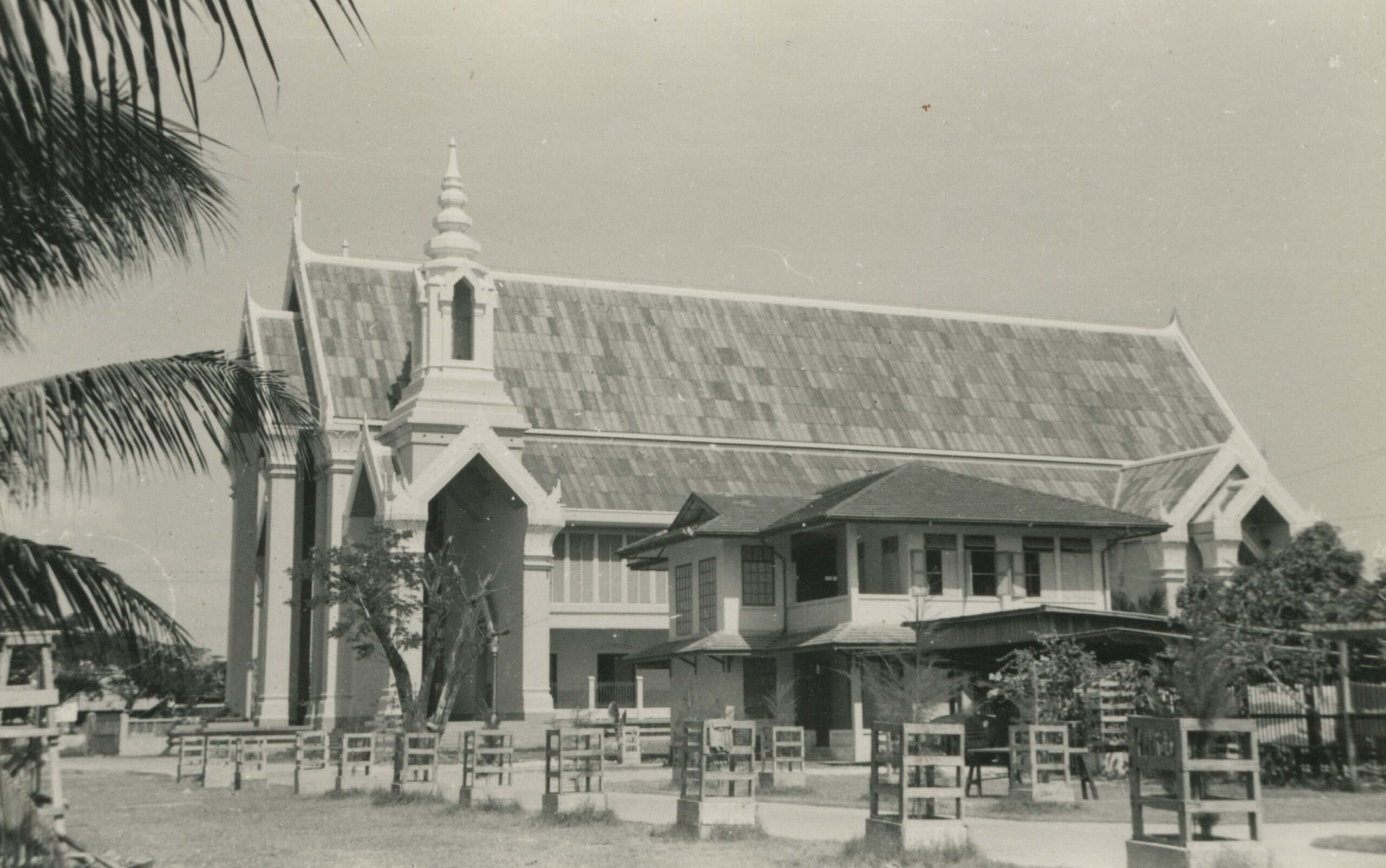
 Download
Download